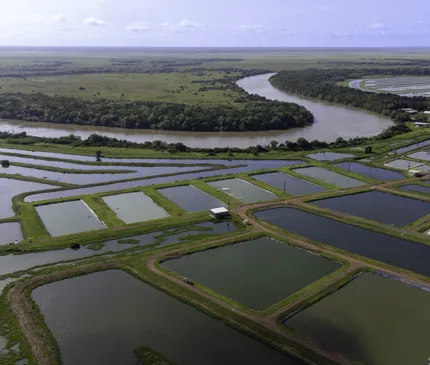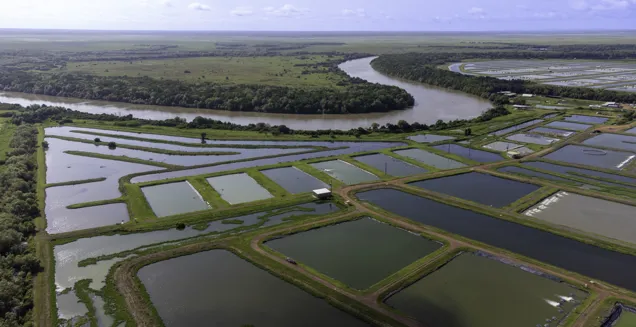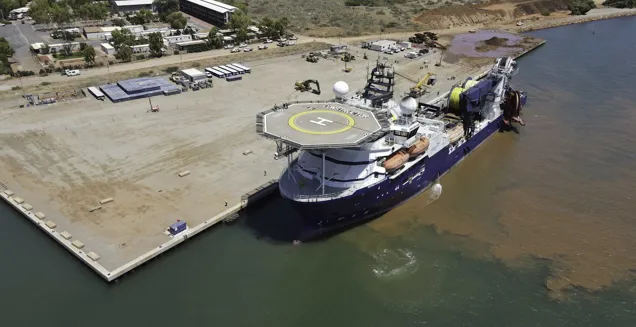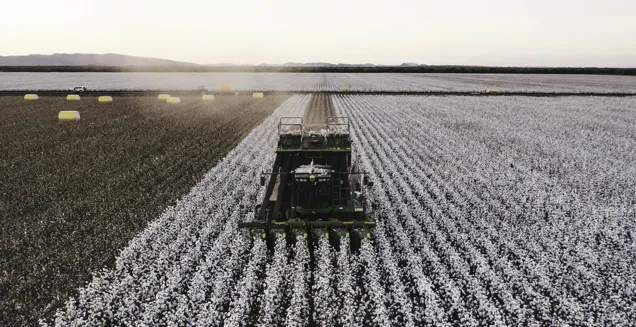- Our Investments
- ...
- Sectors We Support
- Agriculture and Water
Sectors we support
Agriculture and Water
Agriculture and water management in northern Australia are closely intertwined thanks to the region's unique climate, geography, and remoteness. With vast landscapes and a varied climate, the region’s challenges range from desert heat to tropical monsoons.

Northern Australia's agriculture and water sector is a vital cornerstone of the region's economy, culture, and well-being. With a commitment to responsible resource management, innovation, and sustainability, this sector plays a pivotal role in shaping the region's future.
Agriculture
Northern Australia’s vast land area provides a range of agricultural opportunities including livestock farming, cropping, horticulture, and aquaculture. These activities contribute to local and regional economies by generating income, employment, and export revenues.
Agriculture forms the backbone of many rural communities in northern Australia. Farming creates jobs not only on the farms themselves, but also in related industries such as transportation, processing, and distribution. These jobs provide livelihoods for rural residents and help sustain local communities.
Northern Australia is home to many Indigenous communities that have practised traditional land management for thousands of years. Agriculture generates jobs and opportunities for Indigenous Australians, and in turn benefits from their knowledge and strong connections to the land.
The region's agricultural products, such as beef, seafood, tropical fruits, and nuts, have strong export potential due to their quality and unique characteristics. Access to international markets enables northern Australia to expand its economic opportunities. Agriculture in the region often involves innovative techniques and technologies to overcome challenges such as harsh climatic conditions, water scarcity, and pest management. Research and development in agriculture contribute to the creation of new farming methods, crop varieties, and livestock breeds that are suited to the North's specific conditions.
As NAIF continues to champion transformative initiatives, the agriculture and water sector requires careful consideration of the region's unique climatic conditions, water availability, and sustainability needs.
Water
Water is critically important for northern Australia due to its arid and semi-arid climates, which are characterised by limited and variable rainfall. The region's ability to grow crops, raise livestock, and support horticulture and aquaculture industries depends heavily on water availability for irrigation, especially during dry periods.
Access to reliable water sources is crucial for sustaining rural and regional communities. Many Indigenous communities still don't have reliable water sources for drinking, cooking, sanitation, and other daily needs. Adequate infrastructure for water supply is necessary for the well-being of individuals and the functioning of local economies.
Water-related activities such as fishing, boating and swimming attract visitors to northern Australia, stimulate local economies, and provide opportunities for outdoor recreation and leisure. Resources industries in northern Australia also rely on water for purposes such as mineral processing, dust suppression, and workforce accommodation. Adequate water resources are necessary to support these industries and their associated infrastructure.
Given the arid nature of much of northern Australia's climate, ensuring sustainable water management practises is paramount. This involves optimising water-use efficiency, investing in water storage and infrastructure, promoting water-saving technologies, and implementing policies that balance water needs across various sectors while safeguarding the environment and communities.
Find out more
Whether you're interested in understanding our investment process, exploring the Investment Act and Mandate that guide our decisions, utilising our Indigenous Engagement Strategy Toolkit, or seeking answers to frequently asked questions, we've got you covered. Click on our quick links in this section to discover more about our mission and impact.


